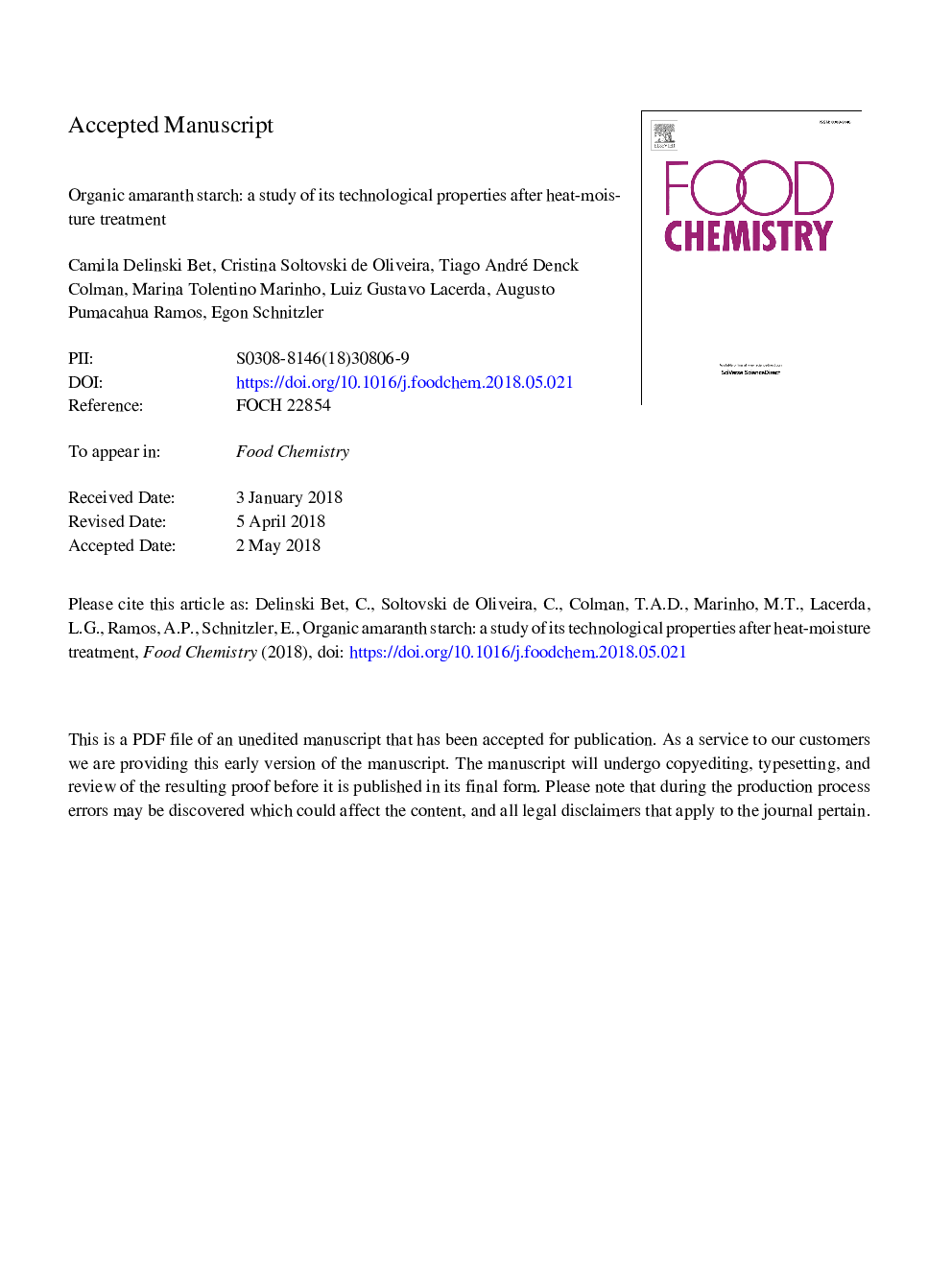| Article ID | Journal | Published Year | Pages | File Type |
|---|---|---|---|---|
| 7584810 | Food Chemistry | 2018 | 27 Pages |
Abstract
Organic amaranth starch (Amaranthus caudatus) was studied after heat-moisture treatment (HMT) using different moisture contents and different times. The starch extracted by the aqueous method presented low lipid and protein content. After HMT, an increase in the thermal stability was identified. The onset and peak temperatures were higher with an increase in moisture content and the times used in the modification. The gelatinisation enthalpy varied due to the heterogeneity of the crystals formed after the structural reorganisation caused by HMT. The relative crystallinity was lower for the physically modified starches. An increase in the pasting temperature was accompanied by a decrease in the viscosity, setback and breakdown, which were proportional to the moisture and time used. The morphology of the HMT-modified samples was not altered; however, agglomerations were noted. Low levels of dispersion homogeneity and suspension stability were observed for the modified samples due to the strong presence of agglomerates.
Related Topics
Physical Sciences and Engineering
Chemistry
Analytical Chemistry
Authors
Camila Delinski Bet, Cristina Soltovski de Oliveira, Tiago André Denck Colman, Marina Tolentino Marinho, Luiz Gustavo Lacerda, Augusto Pumacahua Ramos, Egon Schnitzler,
